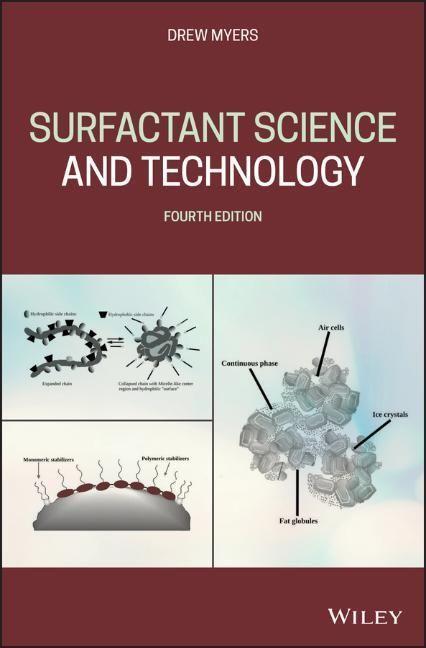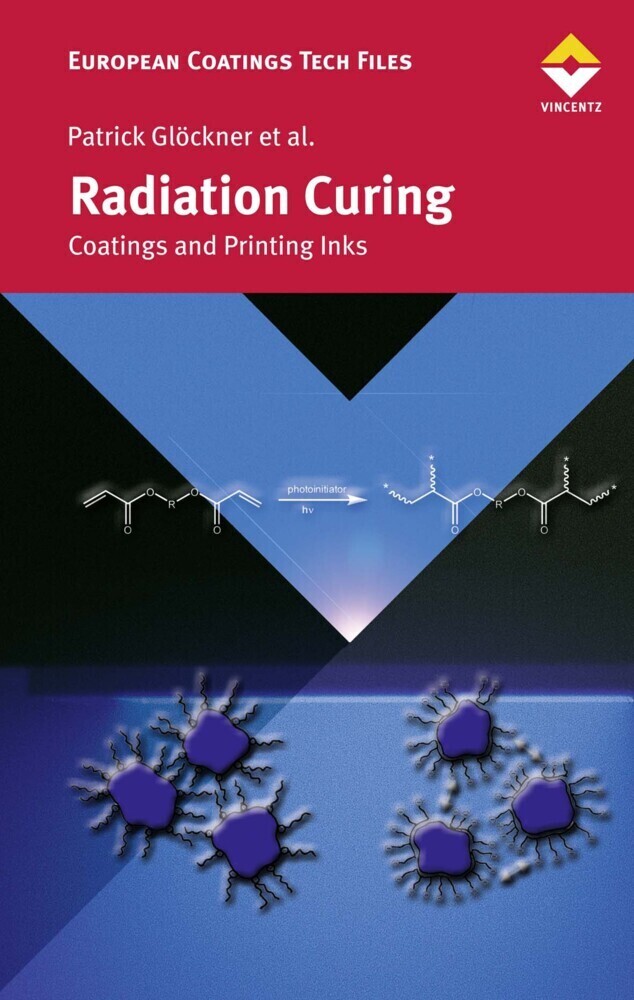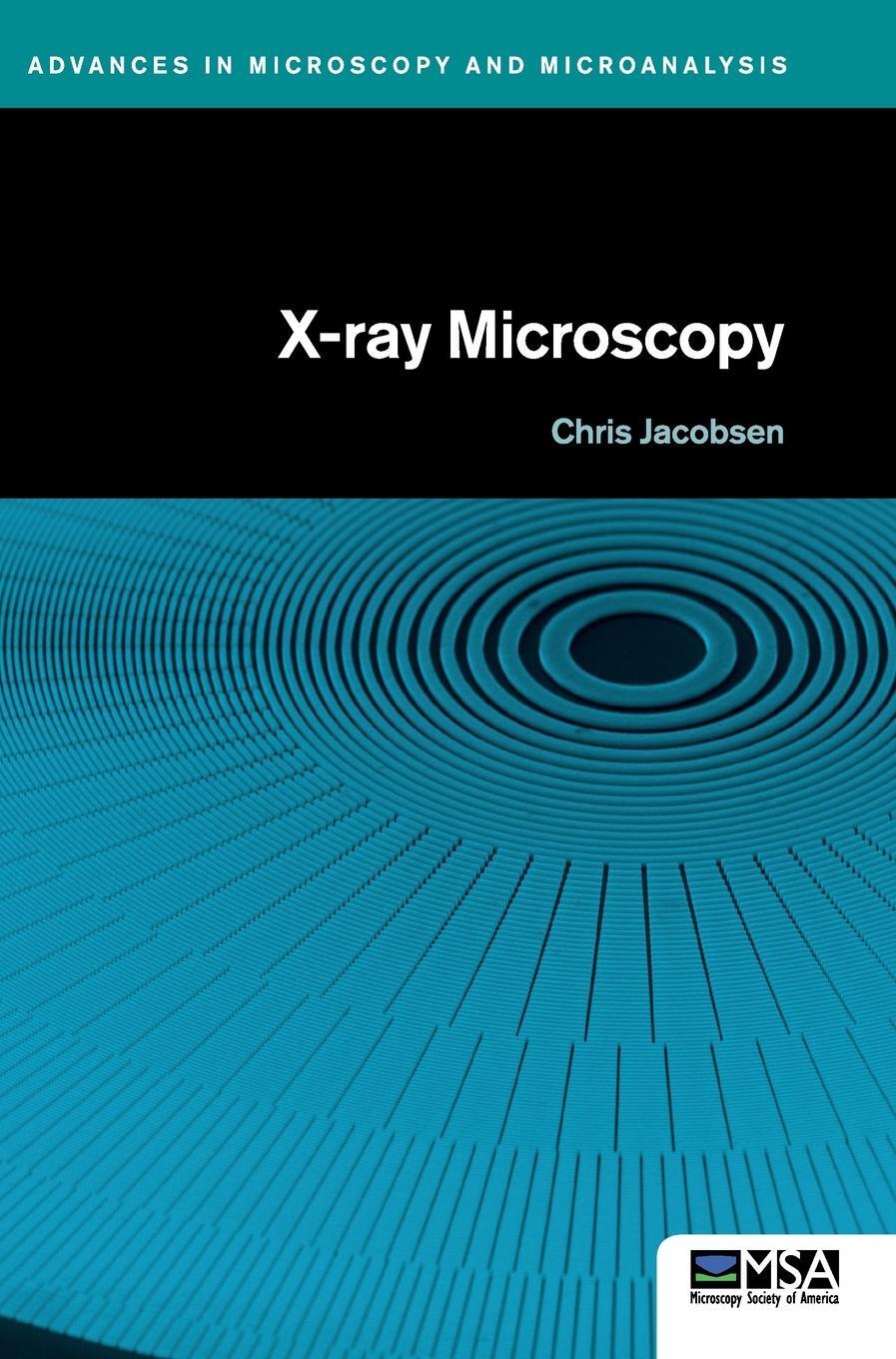201,50 €*
Versandkostenfrei per Post / DHL
Aktuell nicht verfügbar
* Offers a comprehensive introduction and reference of the science and technology of surface active materials
* Elaborates, more fully than prior editions, aspects of surfactant crystal structure as well as their effects on applications
* Adds more information on new classes and applications of natural surfactants in light of environmental consequences of surfactant use
* Offers a comprehensive introduction and reference of the science and technology of surface active materials
* Elaborates, more fully than prior editions, aspects of surfactant crystal structure as well as their effects on applications
* Adds more information on new classes and applications of natural surfactants in light of environmental consequences of surfactant use
DREW MYERS obtained his Ph.D. in Organic Chemistry with secondary specialization in Medicinal Chemistry at the University of Utah in 1974 and his M.Sc. in Surface and Colloid Science at the University of Bristol in 1979. He has been a consultant in surface, colloid, organic, and polymer chemistry since 1986.
1 An Overview of Surfactant Science and Technology 1
1.1 A Brief History of Surfactant Science and Technology 3
1.2 Surfactants in the Modern World 5
1.3 The Economics of Surfactant Science and Technology 8
1.4 The Near-Term Economic and Technological Future for Surfactants 10
1.5 Surfactantsin the Environment 11
1.6 A Surfactant Glossary 13
2 The Classification of Surfactants 17
2.1 The Basic Structure of Amphiphilic Molecules 17
2.2 A Systematic Classification of Surfactants 19
2.2.1 Surfactant Solubilizing Groups 19
2.2.2 Making a Choice 21
2.3 The Generic Anatomy of Surfactants 21
2.3.1 The Many Faces of Dodecane 22
2.3.2 Surfactant Solubilizing Groups 25
2.3.3 Common Surfactant Hydrophobic Groups 26
2.3.3.1 The Natural Fatty Acids 27
2.3.3.2 Saturated Hydrocarbons or Paraffins 28
2.3.3.3 Olefins 28
2.3.3.4 Alkyl Benzenes 29
2.3.3.5 Alcohols 29
2.3.3.6 Alkyl Phenols 30
2.3.3.7 Polyoxypropylenes 30
2.3.3.8 Fluorocarbons 31
2.3.3.9 Silicone Surfactants 32
2.3.3.10 Miscellaneous Biological Structures 32
2.4 The Systematic Classification of Surfactants 33
2.5 Anionic Surfactants 34
2.5.1 Sulfate Esters 35
2.5.1.1 Fatty Alcohol Sulfates 36
2.5.1.2 Sulfated Fatty Acid Condensation Products 36
2.5.1.3 Sulfated Ethers 37
2.5.1.4 Sulfated Fats and Oils 38
2.5.2 Sulfonic Acid Salts 39
2.5.2.1 Aliphatic Sulfonates 39
2.5.2.2 Alkyl Aryl Sulfonates 40
2.5.2.3 alpha-Sulfocarboxylic Acids and Their Derivatives 42
2.5.2.4 Miscellaneous Sulfo-Ester and Amide Surfactants 43
2.5.2.5 Alkyl Glyceryl Ether Sulfonates 46
2.5.2.6 Lignin Sulfonates 46
2.5.3 Carboxylate Soaps and Detergents 46
2.5.4 Phosphoric Acid Esters and Related Surfactants 48
2.6 Cationic Surfactants 49
2.7 Nonionic Surfactants 51
2.7.1 Polyoxyethylene-Based Surfactants 51
2.7.2 Derivatives of Polyglycerols and Other Polyols 52
2.7.3 Block Copolymer Nonionic Surfactants 54
2.7.4 Miscellaneous Nonionic Surfactants 54
2.8 Amphoteric Surfactants 55
2.8.1 Imidazoline Derivatives 56
2.8.2 Surface-Active Betaines and Sulfobetaines 57
2.8.3 Phosphatides and Related Amphoteric Surfactants 58
3 Surfactant Chemical Structures: Putting the Pieces Together 61
3.1 Surfactant Building Blocks 61
3.2 A Surfactant Family Tree 63
3.2.1 The Many Faces of Dodecane 63
3.3 Common Surfactant Hydrophobic Groups 66
3.3.1 The Natural Fatty Acids 67
3.3.2 Paraffins or Saturated Hydrocarbons 67
3.3.3 Olefins 67
3.3.4 Alkylbenzenes 68
3.3.5 Alcohols 69
3.3.6 Alkylphenols 70
3.3.7 Polyoxypropylene 70
3.3.8 Fluorocarbons 70
3.3.9 Silicone-Based Surfactants 72
3.3.10 Nonchemically Produced, a.k.a. "Natural" Surfactants 74
4 Natural Surfactants and Biosurfactants 75
4.1 What Makes a Surfactant "Natural"? 76
4.2 Surfactants Based on a Natural Sugar-Based Polar Head Groups 78
4.3 Biosurfactants 80
4.3.1 Biosurfactants as Nature Makes Them 80
4.3.2 Properties of Biosurfactants 81
4.3.3 Biosurfactant Classification 83
4.3.4 Some Aspects of Biosurfactant Production 84
4.3.5 Some Factors Affecting Biosurfactant Production 85
4.4 Biosurfactant Applications 87
4.5 Potential Limitations on the Commercial Use of Biosurfactants 90
4.6 Some Opportunities for Future Research and Development 90
4.7 Some Observations About the Future of Biosurfactants 90
5 Fluid Surfaces and Interfaces 93
5.1 Molecules at Interfaces 95
5.2 Interfaces and Adsorption Phenomena 97
5.2.1 A Thermodynamic Picture of Adsorption 97
5.2.2 Surface and Interfacial Tensions 99
5.2.3 The Effect of Surface Curvature 101
5.2.4 The Surface Tension of Solutions 102
5.2.5 Surfactants and the Reduction of Surface Tension 103
5.2.6 Efficiency, Effectiveness, and Surfactant Structure 105
6 Surfactants in Solution: Self-Assembly and Micelle Formation 115
6.1 Surfactant Solubility 116
6.2 The Phase Spectrum of Surfactants in Solution 119
6.3 The History and Development of Micellar Theory 123
6.3.1 Manifestations of Micelle Formations 124
6.3.2 Thermodynamics of Dilute Surfactant Solutions 127
6.3.3 Classical Theories of Micelle Formation 128
6.3.4 Free Energy of Micellization 129
6.4 Molecular Geometry and the Formation of Association Colloids 130
6.5 Experimental Observations of Micellar Systems 133
6.5.1 Micellar Aggregation Numbers 133
6.5.2 The Critical Micelle Concentration 135
6.5.3 The Hydrophobic Group 135
6.5.4 The Hydrophilic Group 143
6.5.5 Counterion Effects on Micellization 145
6.5.6 The Effects of Additives on the Micellization Process 146
6.5.6.1 Electrolyte Effects on Micelle Formation 147
6.5.6.2 The Effect of pH 148
6.5.6.3 The Effects of Added Organic Materials 149
6.5.7 The Effect of Temperature on Micellization 151
6.6 Micelle Formation in Mixed Surfactant Systems 153
6.7 Micelle Formation in Nonaqueous Media 154
6.7.1 Aggregation in Polar Organic Solvents 155
6.7.2 Micelles in Nonpolar Solvents 155
7 Beyond Micelles: Higher Level Self-Assembled Aggregate Structures 161
7.1 The Importance of Surfactant Phase Information 161
7.2 Amphiphilic Fluids 163
7.2.1 Liquid Crystalline, Bicontinuous, and Microemulsion Structures 163
7.2.2 "Classical" Liquid Crystals 165
7.2.3 Liquid Crystalline Phases in Simple Binary Systems 166
7.3 Temperature and Additive Effects on Phase Behavior 170
7.4 Some Current Theoretical Analyses of Novel Mesophases 171
7.5 Vesicles and Bilayer Membranes 171
7.5.1 Vesicles 173
7.5.2 Polymerized Vesicles 174
7.6 Biological Membranes 176
7.6.1 Some Biological Implications of Mesophases 176
7.6.2 Membrane Surfactants and Lipids 177
7.7 Microemulsions 179
7.7.1 Surfactants, Co-surfactants, and Microemulsion Formation 183
7.7.1.1 Ionic Surfactant Systems 183
7.7.1.2 Nonionic Surfactant Systems 184
7.7.2 Applications 185
8 Surfactant Self-Assembled Aggregates at Work 187
8.1 Solubilization in Surfactants Micelles 188
8.1.1 The "Geography" of Solubilization in Micelles 189
8.1.2 Surfactant Structure and the Solubilization Process 191
8.1.3 Solubilization and the Nature of the Additive 194
8.1.4 The Effect of Temperature on Solubilization Phenomena 196
8.1.5 The Effects of Nonelectrolyte Solutes 197
8.1.6 The Effects of Added Electrolyte 198
8.1.7 Miscellaneous Factors Affecting Micellar Solubilization 199
8.1.8 Hydrotropes 199
8.2 Micellar Catalysis 201
8.2.1 Micellar Catalysis in Aqueous Solution 201
8.2.2 Micellar Catalysis in Nonaqueous Solvents 203
9 Polymeric Surfactants and Surfactant-Polymer Interactions 205
9.1 Polymeric Surfactants and Amphiphiles 205
9.2 Some Basic Chemistry of Polymeric Surfactant Synthesis 207
9.2.1 The Modification of Natural Cellulosic Materials, Gums, and Proteins 207
9.2.2 Synthetic Polymeric Surfactants 208
9.3 Polymeric Surfactants at Interfaces: Structure and Methodology 213
9.4 The Interactions of "Normal" Surfactants with Polymers 214
9.4.1 Surfactant-Polymer Complex Formation 215
9.4.2 Nonionic Polymers 218
9.4.3 Ionic Polymers and Proteins 219
9.5 Polymers, Surfactants, and Solubilization 222
9.6 Surfactant-Polymer Interactions in Emulsion Polymerization 223
10 Emulsions 225
10.1 The Liquid-Liquid Interface 226
10.2 General Considerations of Emulsion Stability 227
10.2.1 The Lifetimes of Typical Emulsions 230
10.2.2 Theories of Emulsion Stability 232
10.3 Emulsion Type and the Nature of the Surfactant 233
10.4 Surface Activity and Emulsion Stability 235
10.5 Mixed Surfactant Systems and Interfacial Complexes 239
10.6 Amphiphile Mesophases and Emulsion Stability 242
10.7 Surfactant Structure and Emulsion Stability 245
10.7.1 The Hydrophile-Lipophile Balance (HLB) 245
10.7.2 Phase Inversion Temperature (PIT) 250
10.7.3 Application of HLB and PIT in Emulsion Formulation 251
10.7.4 The Effects of Additives on the "Effective" HLB of Surfactants 253
10.8 Multiple Emulsions 254
10.8.1 Nomenclature for Multiple Emulsions 254
10.8.2 Preparation and Stability of Multiple Emulsions 254
10.8.3 Pathways for Primary Emulsion Breakdown 255
10.8.4 The Surfactants and Phase Components 256
11 Foams and Liquid Aerosols 259
11.1 The Physical Basis for Foam Formation 260
11.2 The Role of Surfactant in Foams 263
11.2.1 Foam Formation and Surfactant Structure 266
11.2.2 Amphiphilic Mesophases and Foam Stability 268
11.2.3 The Effects of Additives on Surfactant Foaming Properties 269
11.3 Foam Inhibition 271
11.4 Chemical Structures of Antifoaming Agents 272
11.5 A Summary of the Foaming and Antifoaming Activity of Additives 273
11.6 The Spreading Coefficient 274
11.7 Liquid Aerosols 276
11.7.1 The Formation of Liquid Aerosols 276
11.7.1.1 Spraying and Related Mechanisms of Mist and Fog Formation 276
11.7.1.2 Nozzle Atomization 277
11.7.1.3 Rotary Atomization 278
11.7.2 Aerosol Formation by Condensation 279
11.7.3 Colloidal Properties of Aerosols 282
11.7.3.1 The Dynamics of Aerosol Movement 282
11.7.3.2 Colloidal Interactions in Aerosols 284
12 Solid Surfaces: Adsorption, Wetting, and Dispersions 287
12.1 The Nature of Solid Surfaces 287
12.2 Liquid Versus Solid Surfaces 290
12.3 Adsorption at the Solid-Liquid Interface 291
12.3.1 Adsorption Isotherms 292
12.3.2 Mechanisms of Surfactant Adsorption 293
12.3.2.1 Dispersion Forces 294
12.3.2.2 Polarization and Dipolar Interactions 295
12.3.2.3 Electrostatic Interactions 296
12.3.3 The Electrical Double Layer 297
12.4 The Mechanics of Surfactant Adsorption 298
12.4.1 Adsorption and the Nature of the Adsorbent Surface 299
12.4.2 Nonpolar, Hydrophobic Surfaces 299
12.4.3 Polar, Uncharged Surfaces 300
12.4.4 Surfaces Having Discrete Electrical Charges 301
12.5 Surfactant Structure and Adsorption from Solution 303
12.5.1 Surfaces Possessing Strong Charge Sites 303
12.5.2 Adsorption by Uncharged, Polar Surfaces 306
12.5.3 Surfactants at Nonpolar, Hydrophobic Surfaces 306
12.6 Surfactant Adsorption and the Character of Solid Surfaces 307
12.7 Wetting and Related Phenomena 308
12.7.1 Surfactant Manipulation of the Wetting Process...
| Erscheinungsjahr: | 2020 |
|---|---|
| Fachbereich: | Physikalische Chemie |
| Genre: | Chemie |
| Rubrik: | Naturwissenschaften & Technik |
| Medium: | Buch |
| Seiten: | 416 |
| Inhalt: | 416 S. |
| ISBN-13: | 9781119465850 |
| ISBN-10: | 1119465850 |
| Sprache: | Englisch |
| Einband: | Gebunden |
| Autor: | Myers, Drew |
| Auflage: | 4th edition |
| Hersteller: | Wiley |
| Maße: | 264 x 184 x 30 mm |
| Von/Mit: | Drew Myers |
| Erscheinungsdatum: | 04.08.2020 |
| Gewicht: | 0,926 kg |
DREW MYERS obtained his Ph.D. in Organic Chemistry with secondary specialization in Medicinal Chemistry at the University of Utah in 1974 and his M.Sc. in Surface and Colloid Science at the University of Bristol in 1979. He has been a consultant in surface, colloid, organic, and polymer chemistry since 1986.
1 An Overview of Surfactant Science and Technology 1
1.1 A Brief History of Surfactant Science and Technology 3
1.2 Surfactants in the Modern World 5
1.3 The Economics of Surfactant Science and Technology 8
1.4 The Near-Term Economic and Technological Future for Surfactants 10
1.5 Surfactantsin the Environment 11
1.6 A Surfactant Glossary 13
2 The Classification of Surfactants 17
2.1 The Basic Structure of Amphiphilic Molecules 17
2.2 A Systematic Classification of Surfactants 19
2.2.1 Surfactant Solubilizing Groups 19
2.2.2 Making a Choice 21
2.3 The Generic Anatomy of Surfactants 21
2.3.1 The Many Faces of Dodecane 22
2.3.2 Surfactant Solubilizing Groups 25
2.3.3 Common Surfactant Hydrophobic Groups 26
2.3.3.1 The Natural Fatty Acids 27
2.3.3.2 Saturated Hydrocarbons or Paraffins 28
2.3.3.3 Olefins 28
2.3.3.4 Alkyl Benzenes 29
2.3.3.5 Alcohols 29
2.3.3.6 Alkyl Phenols 30
2.3.3.7 Polyoxypropylenes 30
2.3.3.8 Fluorocarbons 31
2.3.3.9 Silicone Surfactants 32
2.3.3.10 Miscellaneous Biological Structures 32
2.4 The Systematic Classification of Surfactants 33
2.5 Anionic Surfactants 34
2.5.1 Sulfate Esters 35
2.5.1.1 Fatty Alcohol Sulfates 36
2.5.1.2 Sulfated Fatty Acid Condensation Products 36
2.5.1.3 Sulfated Ethers 37
2.5.1.4 Sulfated Fats and Oils 38
2.5.2 Sulfonic Acid Salts 39
2.5.2.1 Aliphatic Sulfonates 39
2.5.2.2 Alkyl Aryl Sulfonates 40
2.5.2.3 alpha-Sulfocarboxylic Acids and Their Derivatives 42
2.5.2.4 Miscellaneous Sulfo-Ester and Amide Surfactants 43
2.5.2.5 Alkyl Glyceryl Ether Sulfonates 46
2.5.2.6 Lignin Sulfonates 46
2.5.3 Carboxylate Soaps and Detergents 46
2.5.4 Phosphoric Acid Esters and Related Surfactants 48
2.6 Cationic Surfactants 49
2.7 Nonionic Surfactants 51
2.7.1 Polyoxyethylene-Based Surfactants 51
2.7.2 Derivatives of Polyglycerols and Other Polyols 52
2.7.3 Block Copolymer Nonionic Surfactants 54
2.7.4 Miscellaneous Nonionic Surfactants 54
2.8 Amphoteric Surfactants 55
2.8.1 Imidazoline Derivatives 56
2.8.2 Surface-Active Betaines and Sulfobetaines 57
2.8.3 Phosphatides and Related Amphoteric Surfactants 58
3 Surfactant Chemical Structures: Putting the Pieces Together 61
3.1 Surfactant Building Blocks 61
3.2 A Surfactant Family Tree 63
3.2.1 The Many Faces of Dodecane 63
3.3 Common Surfactant Hydrophobic Groups 66
3.3.1 The Natural Fatty Acids 67
3.3.2 Paraffins or Saturated Hydrocarbons 67
3.3.3 Olefins 67
3.3.4 Alkylbenzenes 68
3.3.5 Alcohols 69
3.3.6 Alkylphenols 70
3.3.7 Polyoxypropylene 70
3.3.8 Fluorocarbons 70
3.3.9 Silicone-Based Surfactants 72
3.3.10 Nonchemically Produced, a.k.a. "Natural" Surfactants 74
4 Natural Surfactants and Biosurfactants 75
4.1 What Makes a Surfactant "Natural"? 76
4.2 Surfactants Based on a Natural Sugar-Based Polar Head Groups 78
4.3 Biosurfactants 80
4.3.1 Biosurfactants as Nature Makes Them 80
4.3.2 Properties of Biosurfactants 81
4.3.3 Biosurfactant Classification 83
4.3.4 Some Aspects of Biosurfactant Production 84
4.3.5 Some Factors Affecting Biosurfactant Production 85
4.4 Biosurfactant Applications 87
4.5 Potential Limitations on the Commercial Use of Biosurfactants 90
4.6 Some Opportunities for Future Research and Development 90
4.7 Some Observations About the Future of Biosurfactants 90
5 Fluid Surfaces and Interfaces 93
5.1 Molecules at Interfaces 95
5.2 Interfaces and Adsorption Phenomena 97
5.2.1 A Thermodynamic Picture of Adsorption 97
5.2.2 Surface and Interfacial Tensions 99
5.2.3 The Effect of Surface Curvature 101
5.2.4 The Surface Tension of Solutions 102
5.2.5 Surfactants and the Reduction of Surface Tension 103
5.2.6 Efficiency, Effectiveness, and Surfactant Structure 105
6 Surfactants in Solution: Self-Assembly and Micelle Formation 115
6.1 Surfactant Solubility 116
6.2 The Phase Spectrum of Surfactants in Solution 119
6.3 The History and Development of Micellar Theory 123
6.3.1 Manifestations of Micelle Formations 124
6.3.2 Thermodynamics of Dilute Surfactant Solutions 127
6.3.3 Classical Theories of Micelle Formation 128
6.3.4 Free Energy of Micellization 129
6.4 Molecular Geometry and the Formation of Association Colloids 130
6.5 Experimental Observations of Micellar Systems 133
6.5.1 Micellar Aggregation Numbers 133
6.5.2 The Critical Micelle Concentration 135
6.5.3 The Hydrophobic Group 135
6.5.4 The Hydrophilic Group 143
6.5.5 Counterion Effects on Micellization 145
6.5.6 The Effects of Additives on the Micellization Process 146
6.5.6.1 Electrolyte Effects on Micelle Formation 147
6.5.6.2 The Effect of pH 148
6.5.6.3 The Effects of Added Organic Materials 149
6.5.7 The Effect of Temperature on Micellization 151
6.6 Micelle Formation in Mixed Surfactant Systems 153
6.7 Micelle Formation in Nonaqueous Media 154
6.7.1 Aggregation in Polar Organic Solvents 155
6.7.2 Micelles in Nonpolar Solvents 155
7 Beyond Micelles: Higher Level Self-Assembled Aggregate Structures 161
7.1 The Importance of Surfactant Phase Information 161
7.2 Amphiphilic Fluids 163
7.2.1 Liquid Crystalline, Bicontinuous, and Microemulsion Structures 163
7.2.2 "Classical" Liquid Crystals 165
7.2.3 Liquid Crystalline Phases in Simple Binary Systems 166
7.3 Temperature and Additive Effects on Phase Behavior 170
7.4 Some Current Theoretical Analyses of Novel Mesophases 171
7.5 Vesicles and Bilayer Membranes 171
7.5.1 Vesicles 173
7.5.2 Polymerized Vesicles 174
7.6 Biological Membranes 176
7.6.1 Some Biological Implications of Mesophases 176
7.6.2 Membrane Surfactants and Lipids 177
7.7 Microemulsions 179
7.7.1 Surfactants, Co-surfactants, and Microemulsion Formation 183
7.7.1.1 Ionic Surfactant Systems 183
7.7.1.2 Nonionic Surfactant Systems 184
7.7.2 Applications 185
8 Surfactant Self-Assembled Aggregates at Work 187
8.1 Solubilization in Surfactants Micelles 188
8.1.1 The "Geography" of Solubilization in Micelles 189
8.1.2 Surfactant Structure and the Solubilization Process 191
8.1.3 Solubilization and the Nature of the Additive 194
8.1.4 The Effect of Temperature on Solubilization Phenomena 196
8.1.5 The Effects of Nonelectrolyte Solutes 197
8.1.6 The Effects of Added Electrolyte 198
8.1.7 Miscellaneous Factors Affecting Micellar Solubilization 199
8.1.8 Hydrotropes 199
8.2 Micellar Catalysis 201
8.2.1 Micellar Catalysis in Aqueous Solution 201
8.2.2 Micellar Catalysis in Nonaqueous Solvents 203
9 Polymeric Surfactants and Surfactant-Polymer Interactions 205
9.1 Polymeric Surfactants and Amphiphiles 205
9.2 Some Basic Chemistry of Polymeric Surfactant Synthesis 207
9.2.1 The Modification of Natural Cellulosic Materials, Gums, and Proteins 207
9.2.2 Synthetic Polymeric Surfactants 208
9.3 Polymeric Surfactants at Interfaces: Structure and Methodology 213
9.4 The Interactions of "Normal" Surfactants with Polymers 214
9.4.1 Surfactant-Polymer Complex Formation 215
9.4.2 Nonionic Polymers 218
9.4.3 Ionic Polymers and Proteins 219
9.5 Polymers, Surfactants, and Solubilization 222
9.6 Surfactant-Polymer Interactions in Emulsion Polymerization 223
10 Emulsions 225
10.1 The Liquid-Liquid Interface 226
10.2 General Considerations of Emulsion Stability 227
10.2.1 The Lifetimes of Typical Emulsions 230
10.2.2 Theories of Emulsion Stability 232
10.3 Emulsion Type and the Nature of the Surfactant 233
10.4 Surface Activity and Emulsion Stability 235
10.5 Mixed Surfactant Systems and Interfacial Complexes 239
10.6 Amphiphile Mesophases and Emulsion Stability 242
10.7 Surfactant Structure and Emulsion Stability 245
10.7.1 The Hydrophile-Lipophile Balance (HLB) 245
10.7.2 Phase Inversion Temperature (PIT) 250
10.7.3 Application of HLB and PIT in Emulsion Formulation 251
10.7.4 The Effects of Additives on the "Effective" HLB of Surfactants 253
10.8 Multiple Emulsions 254
10.8.1 Nomenclature for Multiple Emulsions 254
10.8.2 Preparation and Stability of Multiple Emulsions 254
10.8.3 Pathways for Primary Emulsion Breakdown 255
10.8.4 The Surfactants and Phase Components 256
11 Foams and Liquid Aerosols 259
11.1 The Physical Basis for Foam Formation 260
11.2 The Role of Surfactant in Foams 263
11.2.1 Foam Formation and Surfactant Structure 266
11.2.2 Amphiphilic Mesophases and Foam Stability 268
11.2.3 The Effects of Additives on Surfactant Foaming Properties 269
11.3 Foam Inhibition 271
11.4 Chemical Structures of Antifoaming Agents 272
11.5 A Summary of the Foaming and Antifoaming Activity of Additives 273
11.6 The Spreading Coefficient 274
11.7 Liquid Aerosols 276
11.7.1 The Formation of Liquid Aerosols 276
11.7.1.1 Spraying and Related Mechanisms of Mist and Fog Formation 276
11.7.1.2 Nozzle Atomization 277
11.7.1.3 Rotary Atomization 278
11.7.2 Aerosol Formation by Condensation 279
11.7.3 Colloidal Properties of Aerosols 282
11.7.3.1 The Dynamics of Aerosol Movement 282
11.7.3.2 Colloidal Interactions in Aerosols 284
12 Solid Surfaces: Adsorption, Wetting, and Dispersions 287
12.1 The Nature of Solid Surfaces 287
12.2 Liquid Versus Solid Surfaces 290
12.3 Adsorption at the Solid-Liquid Interface 291
12.3.1 Adsorption Isotherms 292
12.3.2 Mechanisms of Surfactant Adsorption 293
12.3.2.1 Dispersion Forces 294
12.3.2.2 Polarization and Dipolar Interactions 295
12.3.2.3 Electrostatic Interactions 296
12.3.3 The Electrical Double Layer 297
12.4 The Mechanics of Surfactant Adsorption 298
12.4.1 Adsorption and the Nature of the Adsorbent Surface 299
12.4.2 Nonpolar, Hydrophobic Surfaces 299
12.4.3 Polar, Uncharged Surfaces 300
12.4.4 Surfaces Having Discrete Electrical Charges 301
12.5 Surfactant Structure and Adsorption from Solution 303
12.5.1 Surfaces Possessing Strong Charge Sites 303
12.5.2 Adsorption by Uncharged, Polar Surfaces 306
12.5.3 Surfactants at Nonpolar, Hydrophobic Surfaces 306
12.6 Surfactant Adsorption and the Character of Solid Surfaces 307
12.7 Wetting and Related Phenomena 308
12.7.1 Surfactant Manipulation of the Wetting Process...
| Erscheinungsjahr: | 2020 |
|---|---|
| Fachbereich: | Physikalische Chemie |
| Genre: | Chemie |
| Rubrik: | Naturwissenschaften & Technik |
| Medium: | Buch |
| Seiten: | 416 |
| Inhalt: | 416 S. |
| ISBN-13: | 9781119465850 |
| ISBN-10: | 1119465850 |
| Sprache: | Englisch |
| Einband: | Gebunden |
| Autor: | Myers, Drew |
| Auflage: | 4th edition |
| Hersteller: | Wiley |
| Maße: | 264 x 184 x 30 mm |
| Von/Mit: | Drew Myers |
| Erscheinungsdatum: | 04.08.2020 |
| Gewicht: | 0,926 kg |











